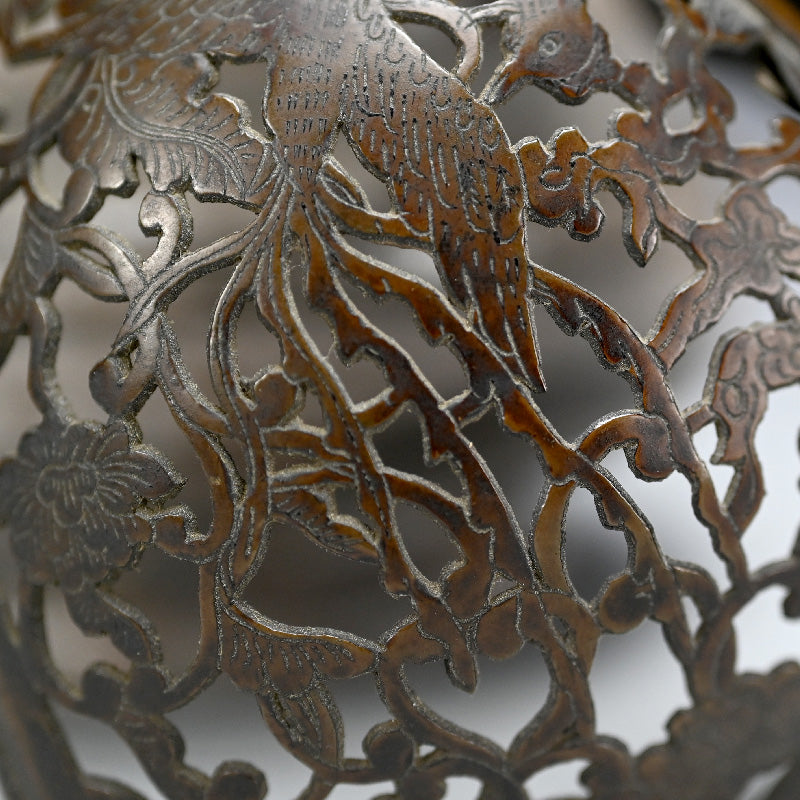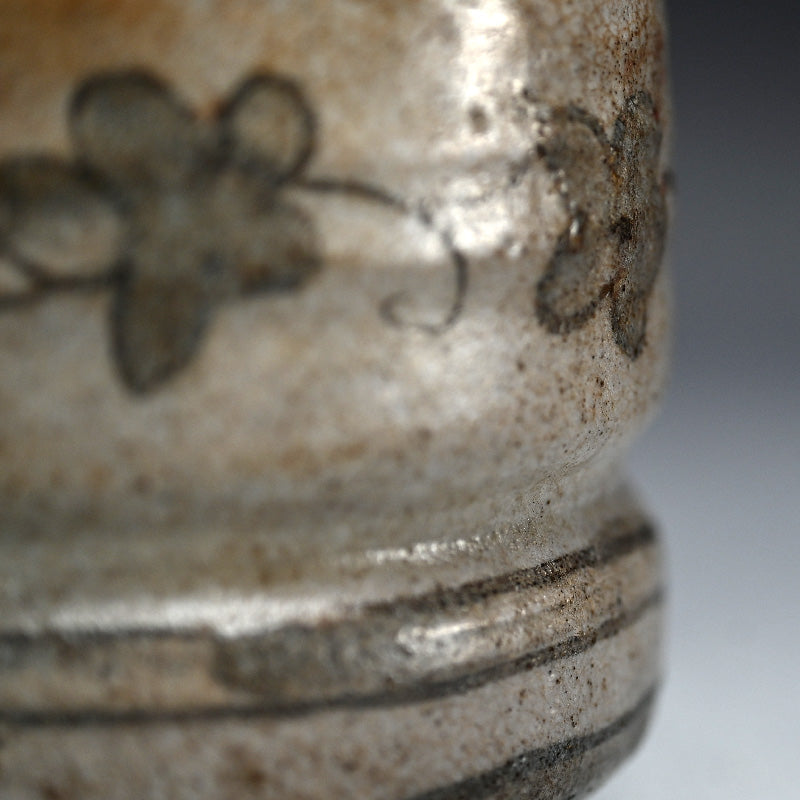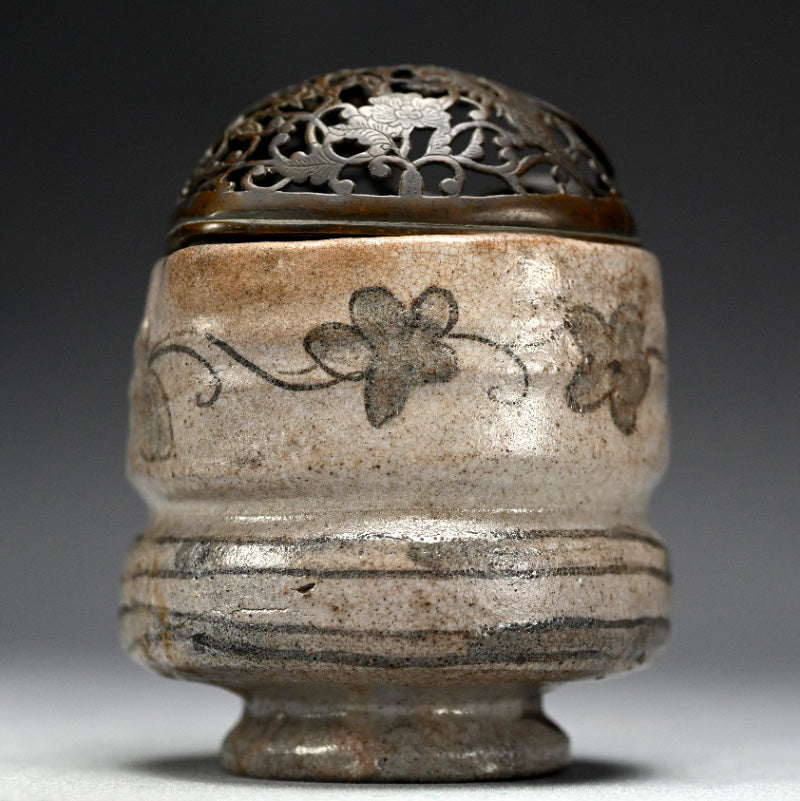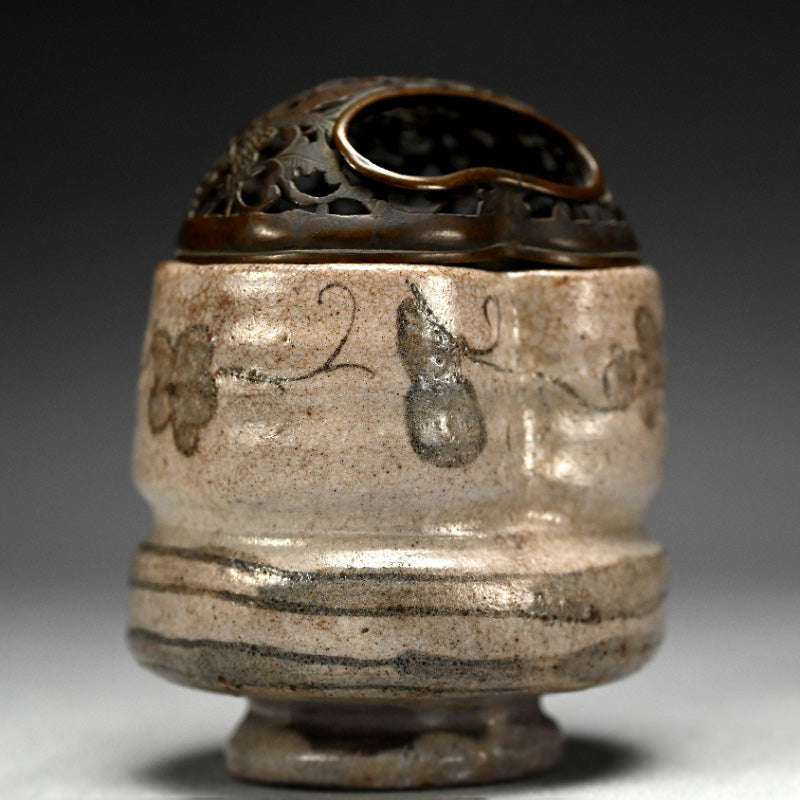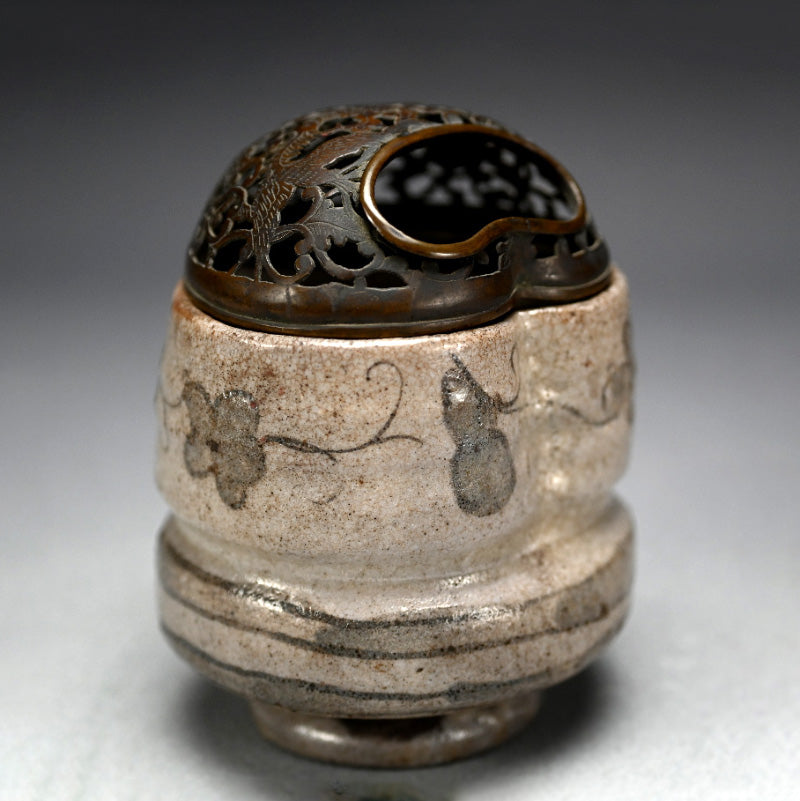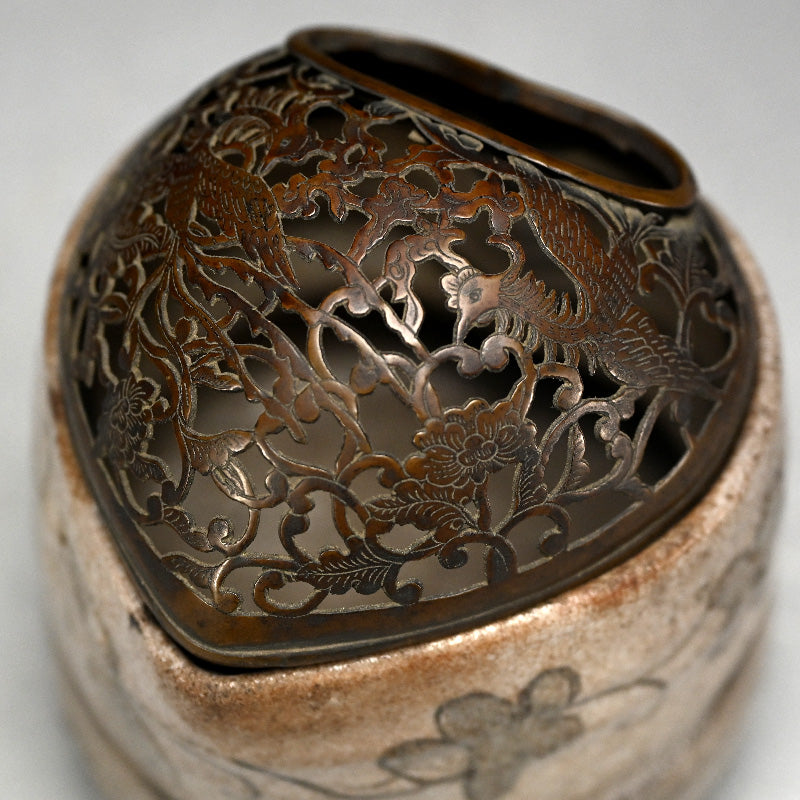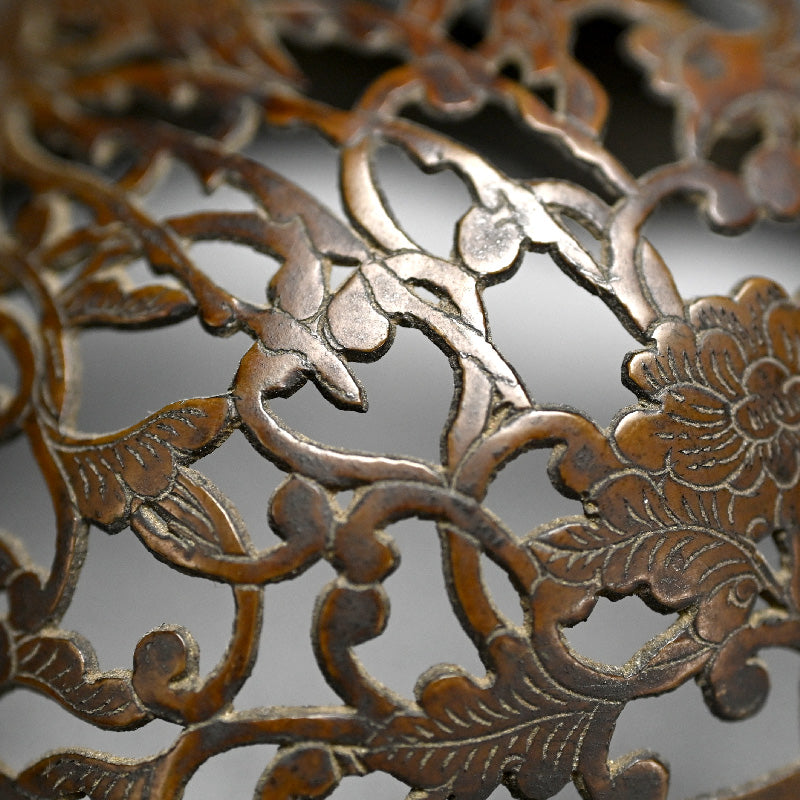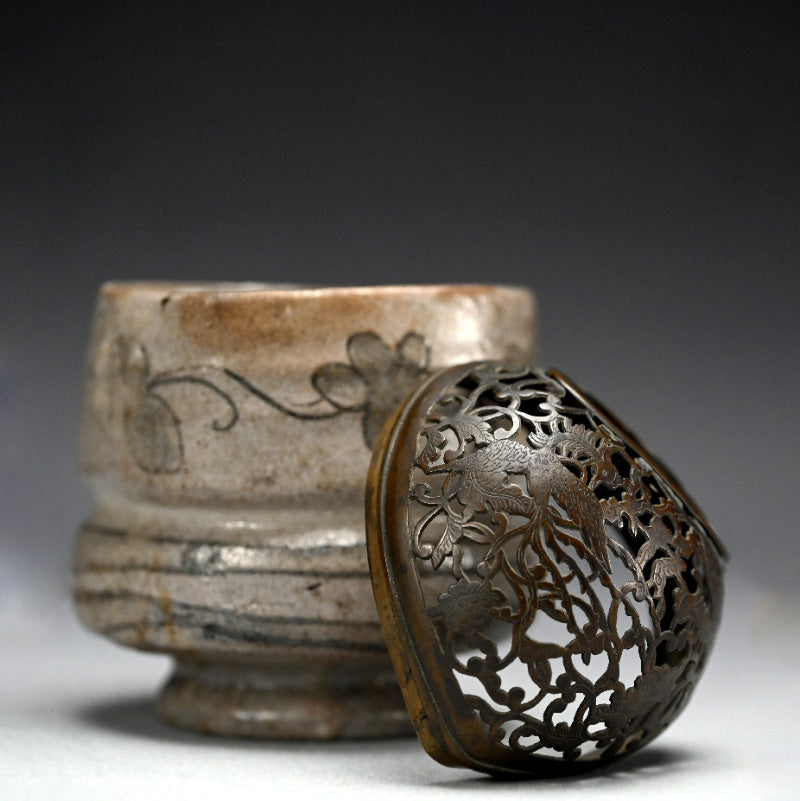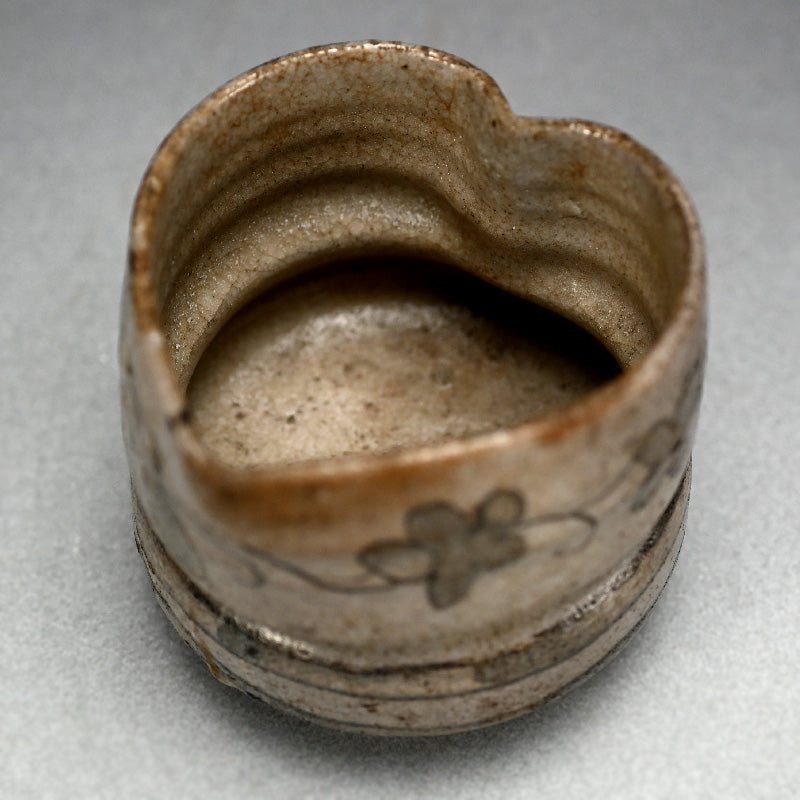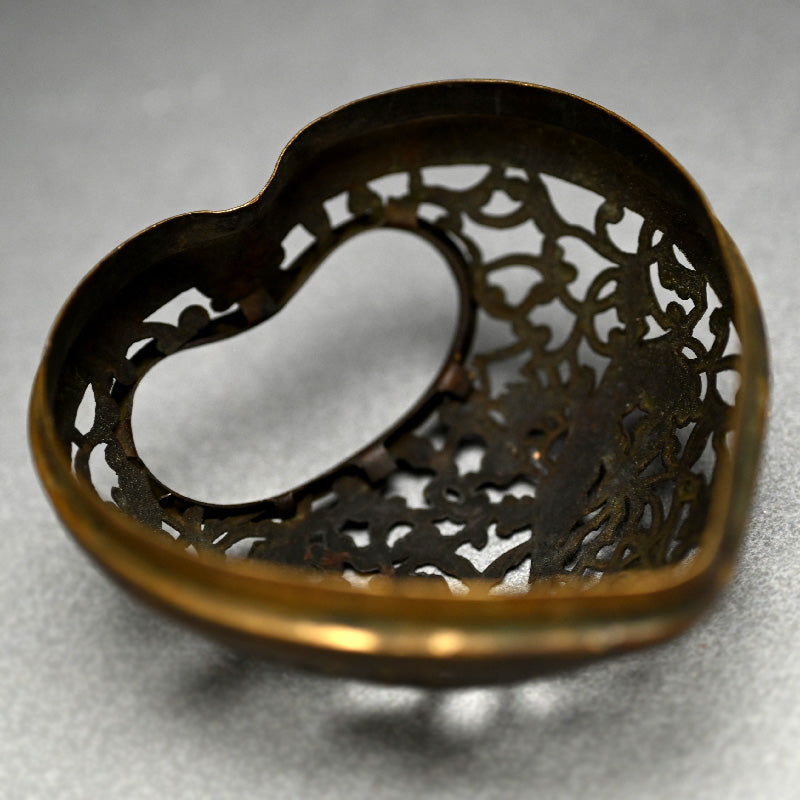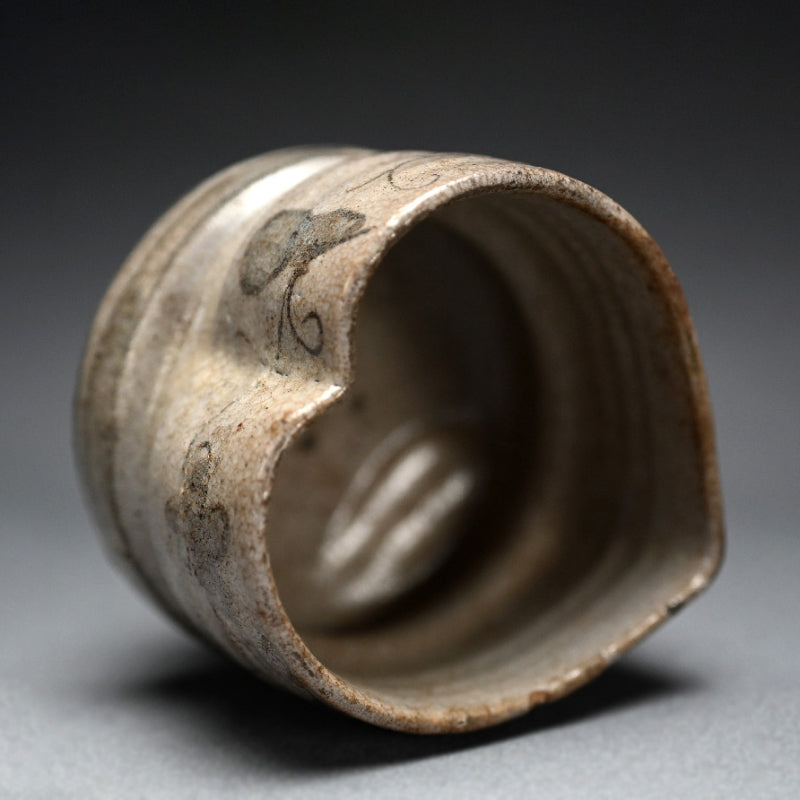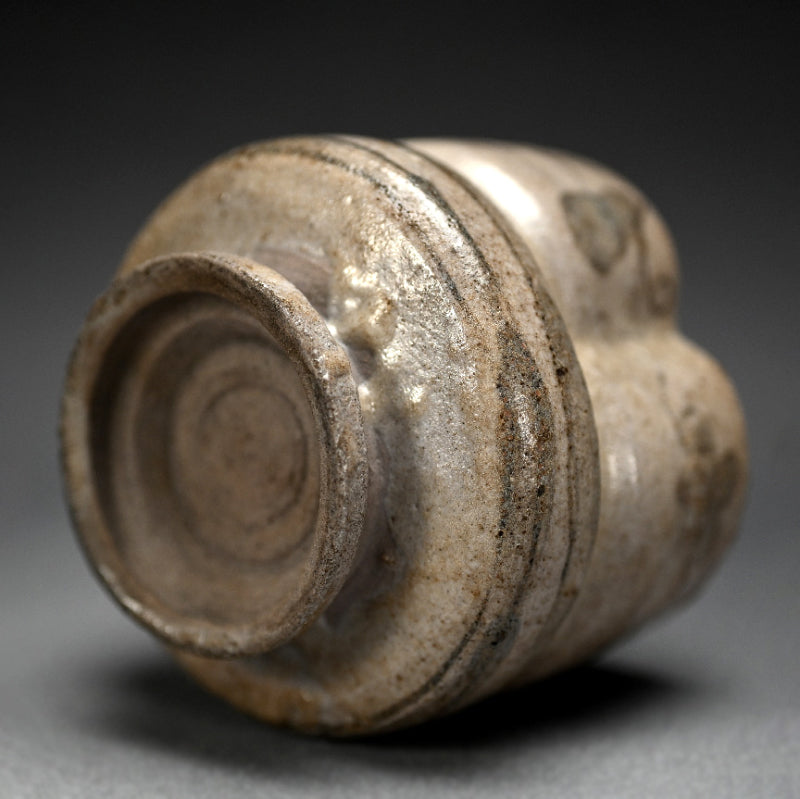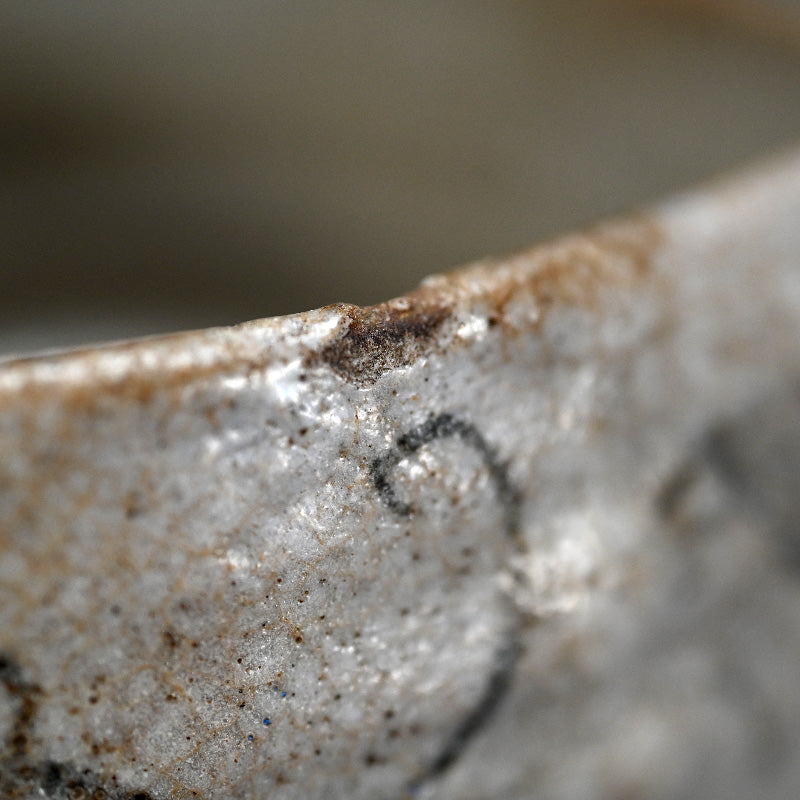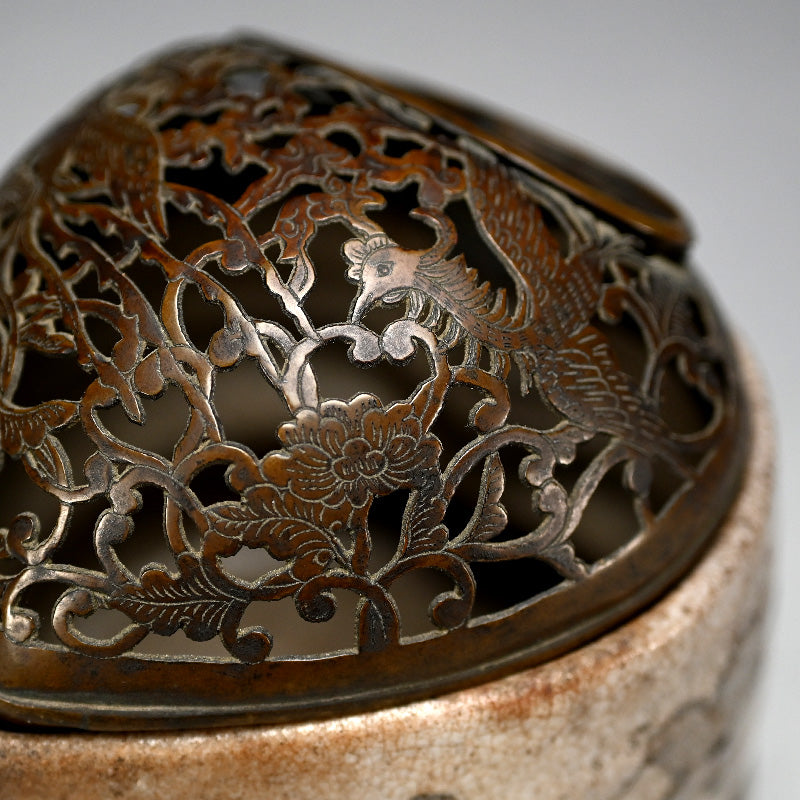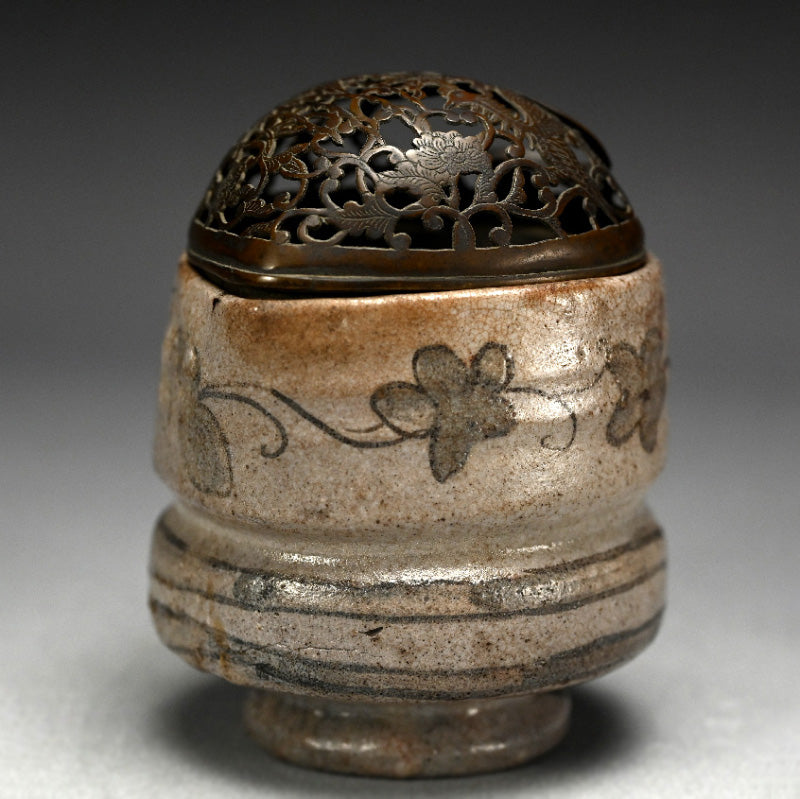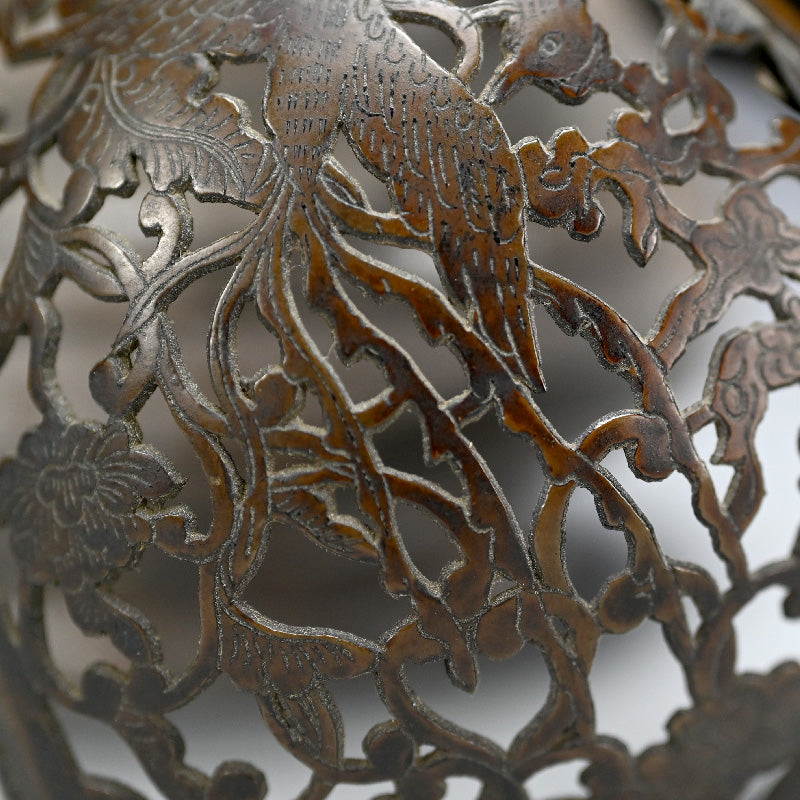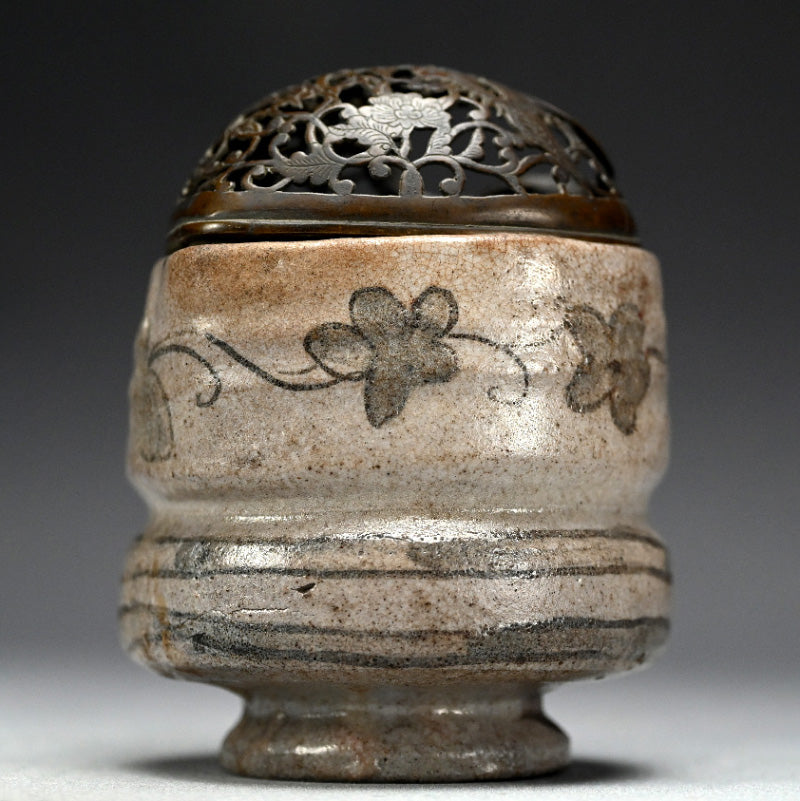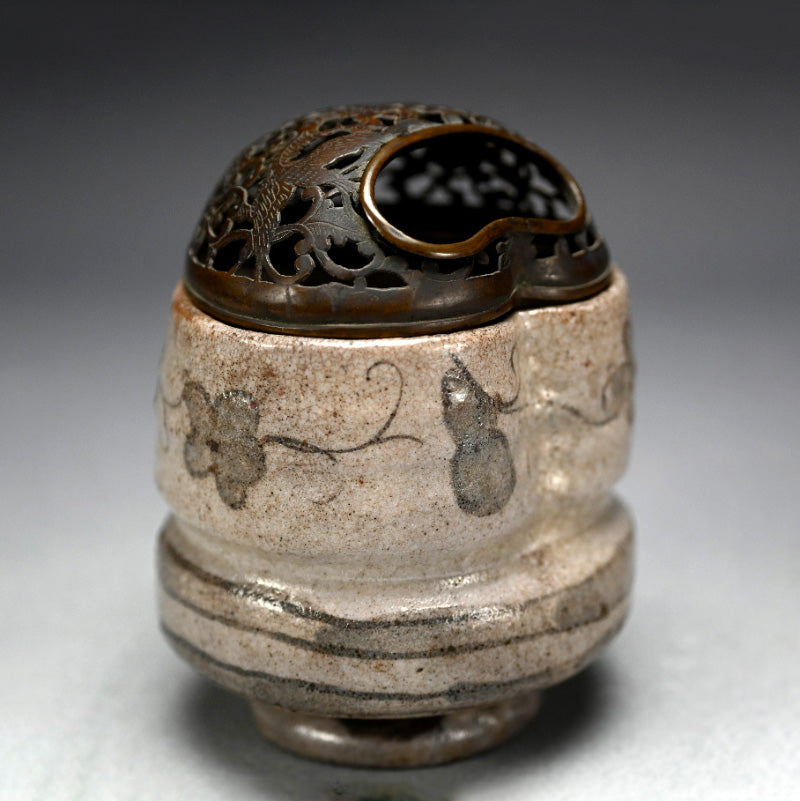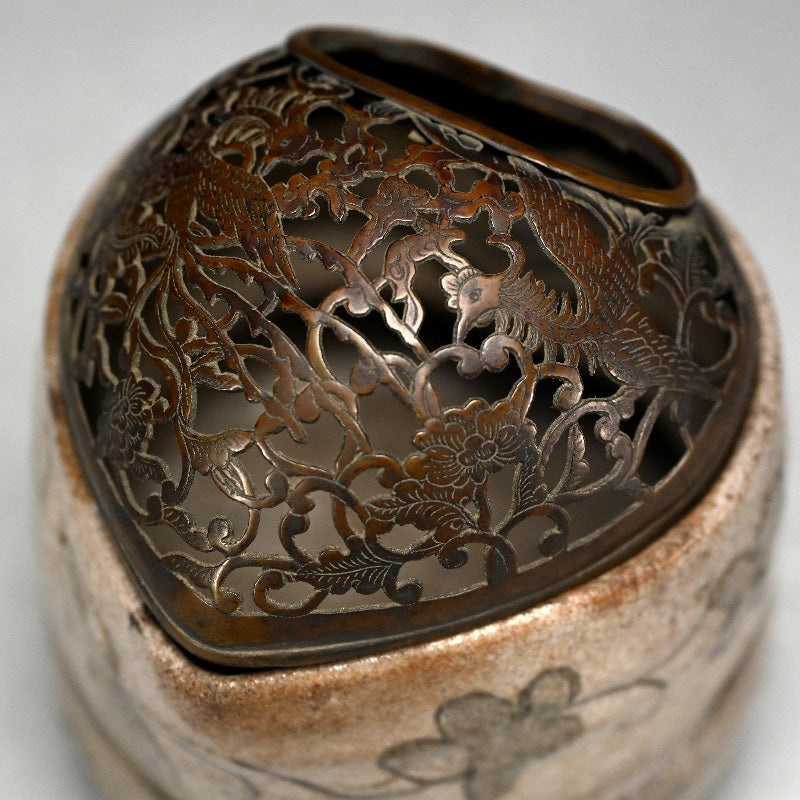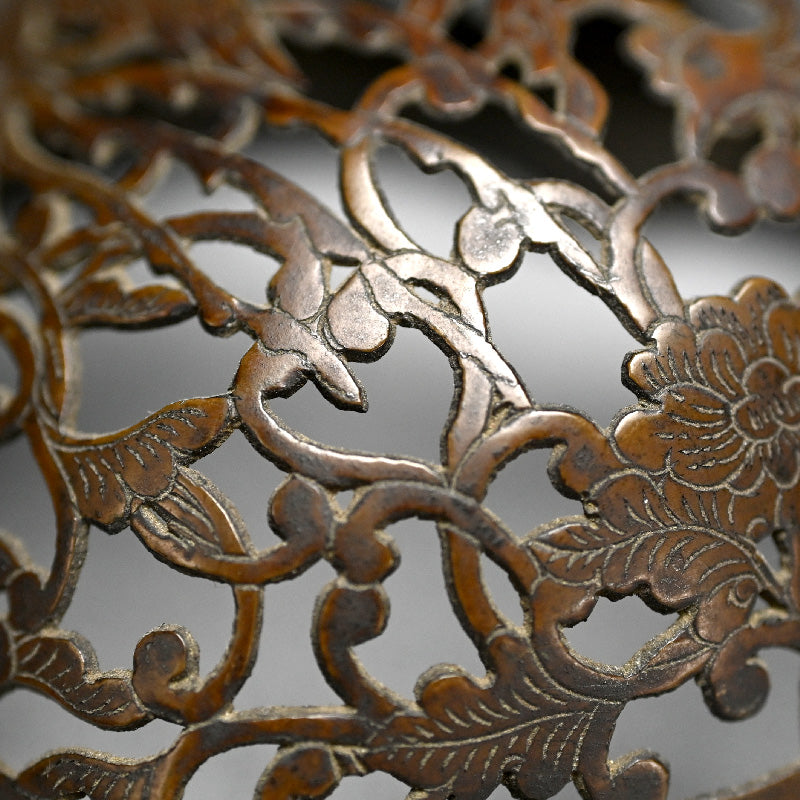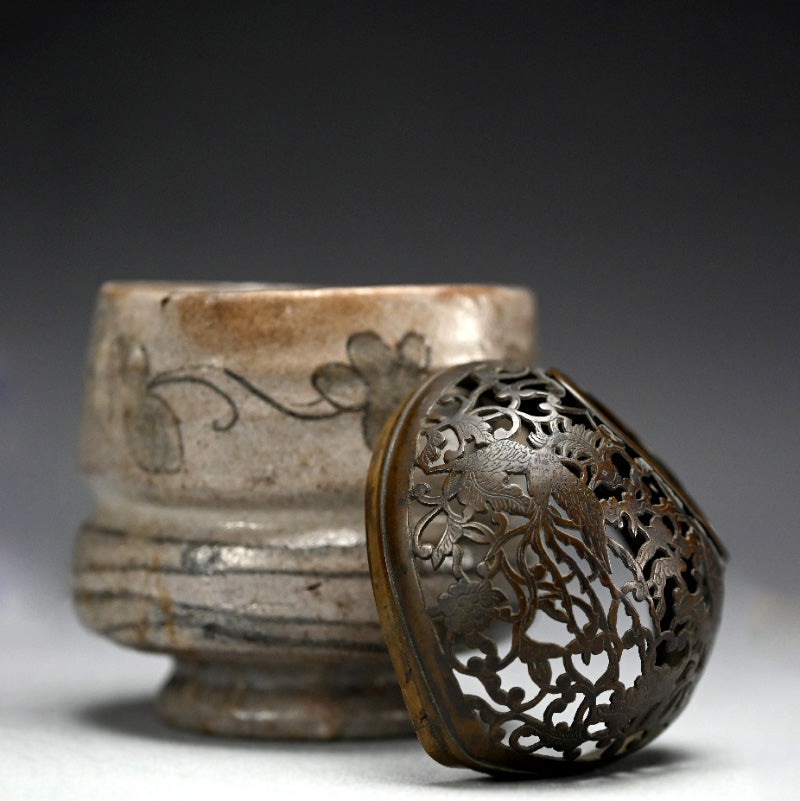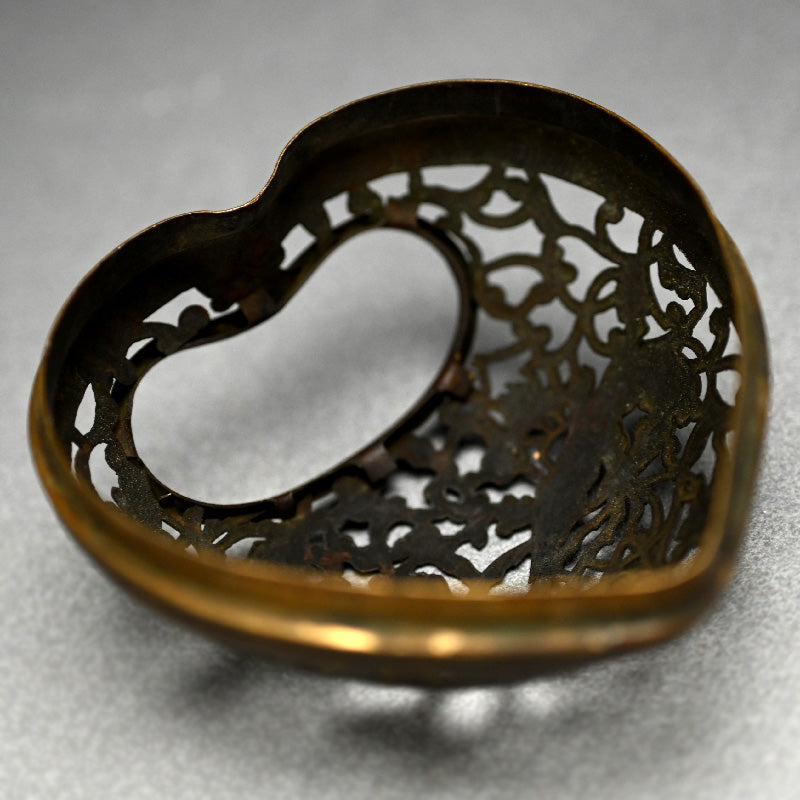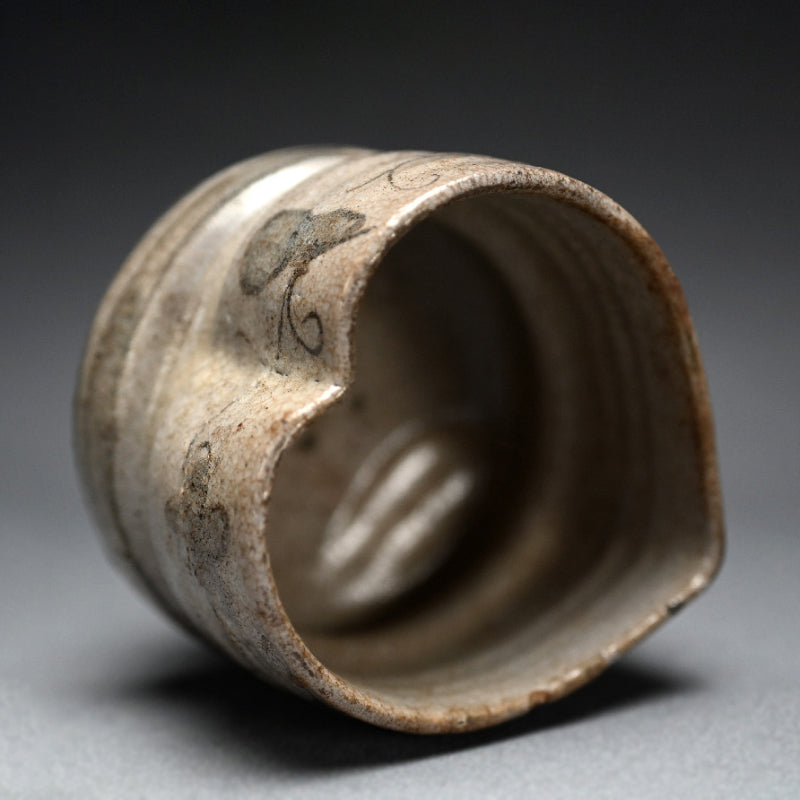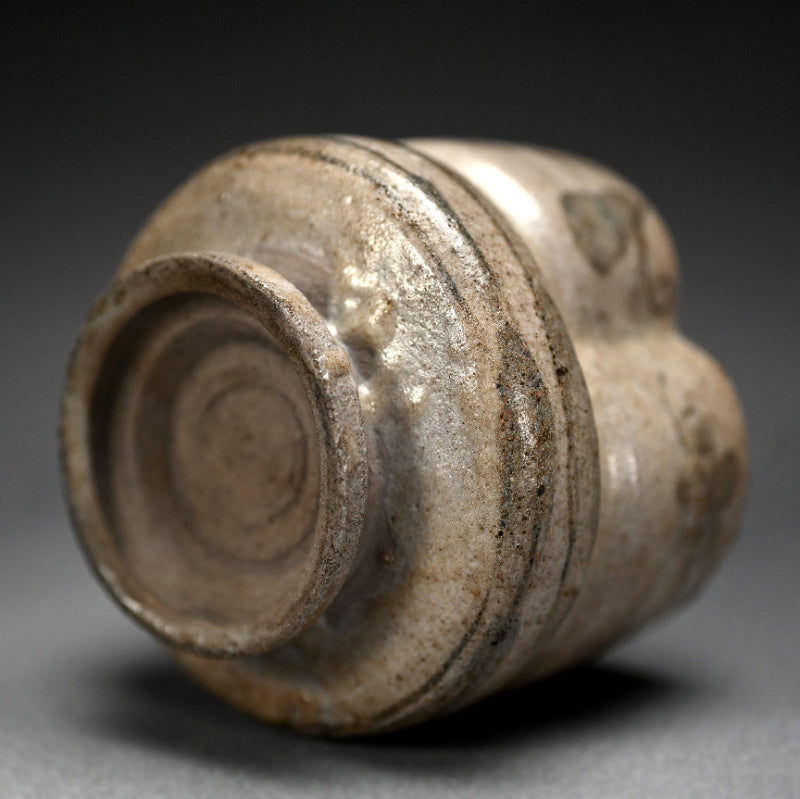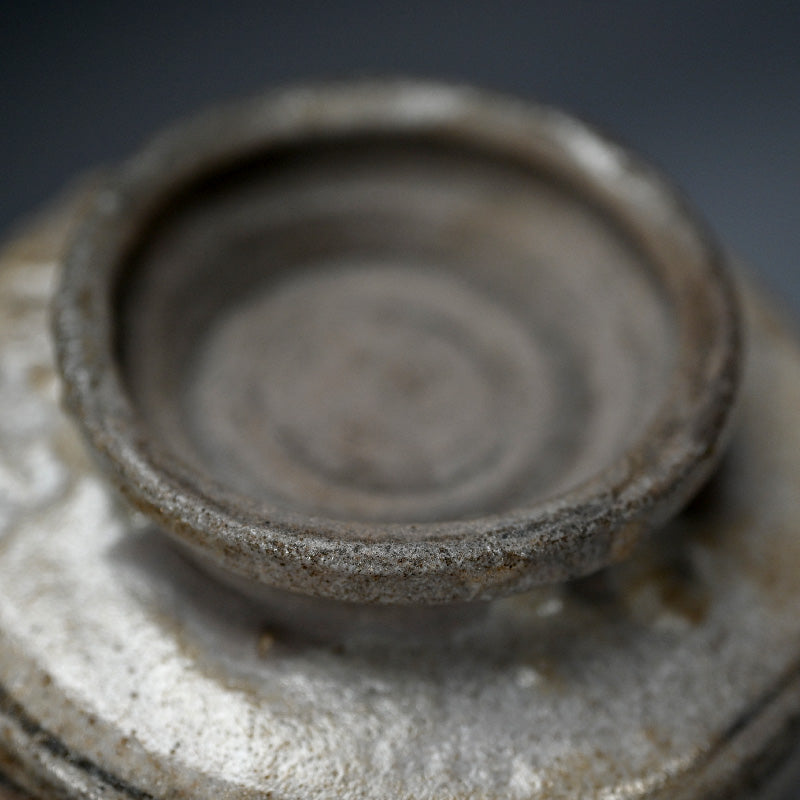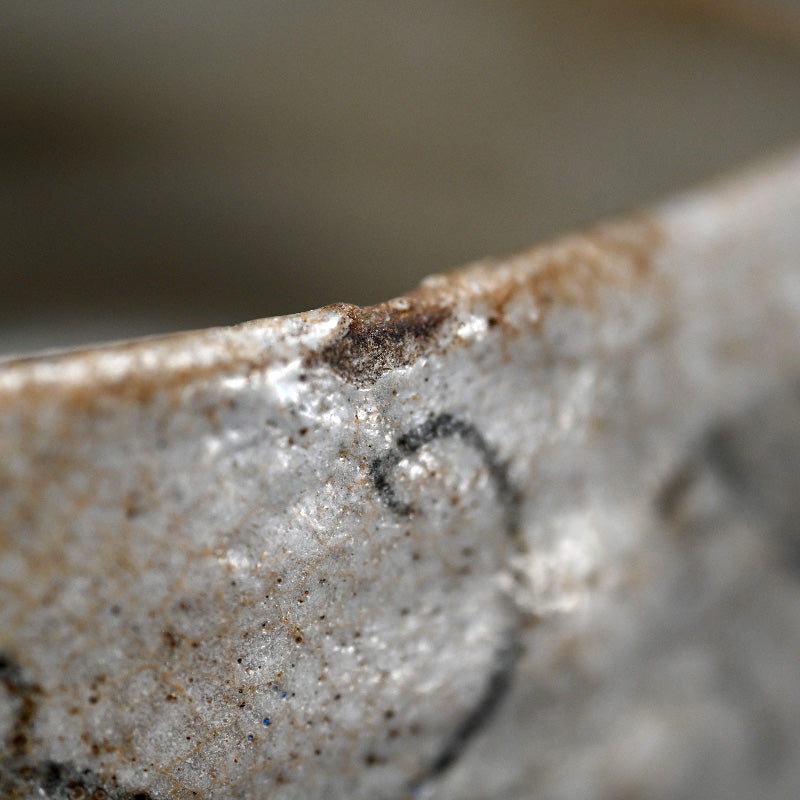1
/
of
16
Early Edo p. Shino-Oribe Koro
Early Edo p. Shino-Oribe Koro
Item Code: K411
Regular price
¥528,200 JPY
Regular price
Sale price
¥528,200 JPY
Unit price
/
per
Tax included.
Couldn't load pickup availability
A Shino Oribe Koro with heart shaped lid pierced with phoenix and flower motif dating from the early Edo period, 17th century. Flowering vines extend form a dangling gourd about the upper part of the body, over an indented belt below which the koro rests on a swelling foot. It is 10 cm (4 inches) diameter, 13 cm (5-1/4 inches) tall and in overall excellent condition, enclosed in a modern wooden collectors storage box.
Shino pottery is one of Japan's most revered traditional ceramic styles, originating during the late 16th century in the Momoyama period (1573–1600). Known for its unique glazes and rustic aesthetic, Shino pottery holds a special place in Japanese art and culture, particularly in the context of the tea ceremony (chanoyu). Shino pottery developed in the Mino region (present-day Gifu Prefecture), which was a prominent center for ceramic production during the Momoyama period.
Shino is believed to be one of the first styles in Japan to use a white feldspathic glaze, a significant innovation at the time. Early Shino ware was inspired by Chinese ceramics but evolved into a uniquely Japanese form with its understated, organic beauty.
Shino typically uses a coarse, iron-rich clay called Mino clay, which contributes to its earthy appearance. The hallmark of Shino pottery is its white glaze made from feldspar. Variations in firing conditions and glaze thickness result in rich textures and subtle color shifts, ranging from milky white to orange, red, or gray. Potters often decorate Shino pieces with simple brushwork designs, such as plants, grasses, or abstract motifs, applied using an iron-rich slip or underglaze. Shino reached its zenith during the Momoyama period when tea masters prized its rustic elegance. The style declined in the early Edo period (1603–1868) as other ceramic styles, such as Oribe and Kakiemon, gained popularity.In the 20th century, Shino pottery experienced a revival, thanks to the efforts of pioneering potters like Arakawa Toyozō (1894–1985). He rediscovered ancient techniques and contributed to its resurgence, earning the title of Living National Treasure.
Shino pottery is one of Japan's most revered traditional ceramic styles, originating during the late 16th century in the Momoyama period (1573–1600). Known for its unique glazes and rustic aesthetic, Shino pottery holds a special place in Japanese art and culture, particularly in the context of the tea ceremony (chanoyu). Shino pottery developed in the Mino region (present-day Gifu Prefecture), which was a prominent center for ceramic production during the Momoyama period.
Shino is believed to be one of the first styles in Japan to use a white feldspathic glaze, a significant innovation at the time. Early Shino ware was inspired by Chinese ceramics but evolved into a uniquely Japanese form with its understated, organic beauty.
Shino typically uses a coarse, iron-rich clay called Mino clay, which contributes to its earthy appearance. The hallmark of Shino pottery is its white glaze made from feldspar. Variations in firing conditions and glaze thickness result in rich textures and subtle color shifts, ranging from milky white to orange, red, or gray. Potters often decorate Shino pieces with simple brushwork designs, such as plants, grasses, or abstract motifs, applied using an iron-rich slip or underglaze. Shino reached its zenith during the Momoyama period when tea masters prized its rustic elegance. The style declined in the early Edo period (1603–1868) as other ceramic styles, such as Oribe and Kakiemon, gained popularity.In the 20th century, Shino pottery experienced a revival, thanks to the efforts of pioneering potters like Arakawa Toyozō (1894–1985). He rediscovered ancient techniques and contributed to its resurgence, earning the title of Living National Treasure.
Share

